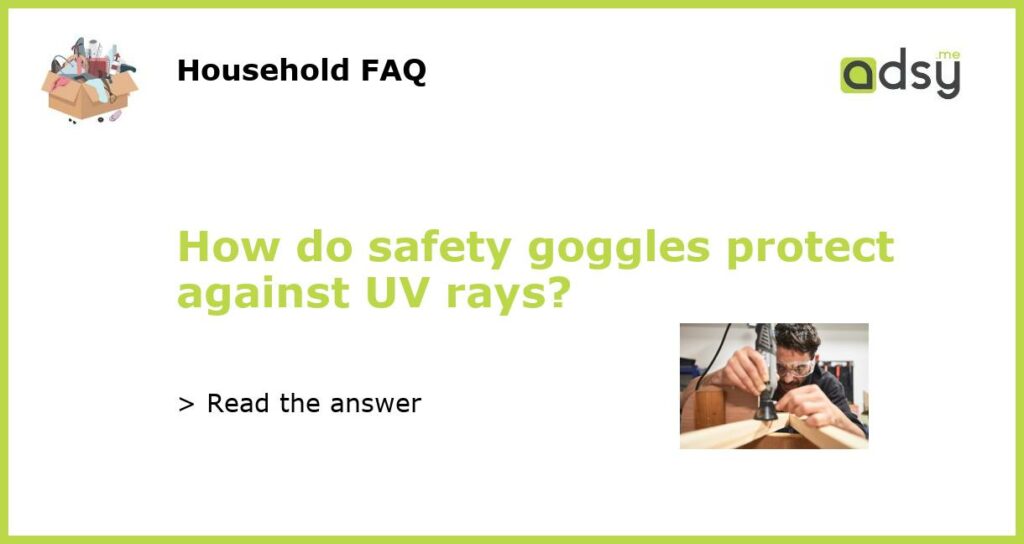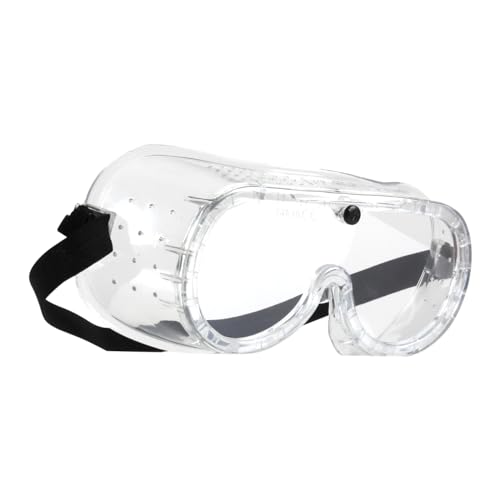Introduction to Safety Goggles and UV Rays
Safety goggles are an essential piece of protective eyewear that are commonly used in various industries and activities to safeguard the eyes from potential hazards. They are specifically designed to shield the eyes from impact, chemicals, and particles that may cause injury or damage. One important aspect of their design is their ability to protect against ultraviolet (UV) rays. UV rays are a form of radiation that can be harmful to the eyes and skin, and safety goggles play a crucial role in minimizing the risk of UV exposure.
The Dangers of UV Rays
UV rays are a type of energy emitted by the sun and other artificial sources, such as tanning beds and welding arcs. There are three types of UV rays: UVA, UVB, and UVC. UVA rays have the longest wavelength and can penetrate the skin’s deeper layers, contributing to skin aging and wrinkling. UVB rays have a medium wavelength and are responsible for sunburns and can also damage the skin’s DNA. UVC rays have the shortest wavelength and are typically filtered out by the Earth’s atmosphere, so they are not as much of a concern.
Overexposure to UV rays can lead to a range of eye problems, including photokeratitis (sometimes referred to as “sunburn of the eyes”), cataracts, macular degeneration, and pterygium. Photokeratitis can cause symptoms such as eye redness, pain, and sensitivity to light, while cataracts are a clouding of the eye’s lens that can result in blurred vision and difficulty seeing at night. Macular degeneration is a leading cause of vision loss and typically affects older adults. Pterygium is a growth on the surface of the eye that can cause irritation and affect vision if it grows large enough.
How Safety Goggles Protect Against UV Rays
Safety goggles are made from materials that have the ability to block or absorb UV rays. They are typically constructed with polycarbonate lenses, which have inherent UV-blocking properties. Polycarbonate is a lightweight and impact-resistant material that is commonly used in safety eyewear due to its durability and protection. Additionally, safety goggles may have a special coating applied to the lenses that enhances their UV protection.
The design of safety goggles also plays a role in their UV protection. They are designed to fit snugly against the face and form a protective seal around the eyes, preventing UV rays from reaching the eyes from the sides or top. Some safety goggles also feature side shields or wraparound designs that provide additional coverage and block more UV rays.
The Importance of Wearing Safety Goggles
Wearing safety goggles that protect against UV rays is crucial in environments where there is a risk of UV exposure. This includes industries such as construction, welding, and manufacturing, where workers may be exposed to UV rays from sunlight or artificial sources. It is also important for outdoor activities such as gardening, skiing, and water sports, where the eyes are more susceptible to UV damage.
By wearing safety goggles that provide UV protection, individuals can significantly reduce their risk of developing eye problems associated with UV rays. It is important to note that regular sunglasses may not provide adequate protection against UV rays, as they may not have the same level of impact resistance or coverage as safety goggles. Safety goggles are specifically designed and tested to meet safety standards and provide reliable protection for the eyes.
Other Ways to Protect Against UV Rays
While safety goggles are an effective means of protecting the eyes from UV rays in certain environments, it is also important to take additional measures to minimize UV exposure. This includes wearing wide-brimmed hats or using umbrellas to provide shade, using sunscreen to protect the skin around the eyes, and seeking shade during the sun’s peak hours, typically between 10 a.m. and 4 p.m. It is recommended to choose sunscreen with a Sun Protection Factor (SPF) of 30 or higher that offers broad-spectrum protection against both UVA and UVB rays.
Regular eye exams are also important to detect any early signs of UV-related eye problems. An eye care professional can provide guidance on proper eye protection and recommend suitable safety goggles or sunglasses with UV protection. By taking these precautions, individuals can enjoy outdoor activities and work environments while minimizing the risk of UV damage to their eyes.






